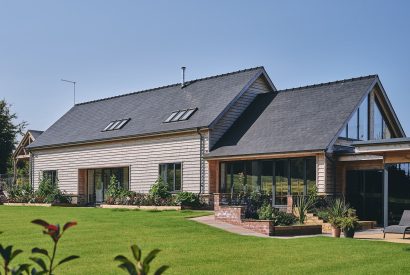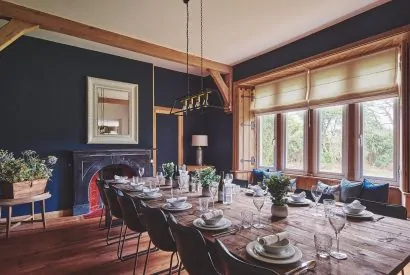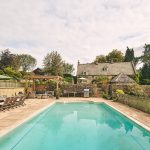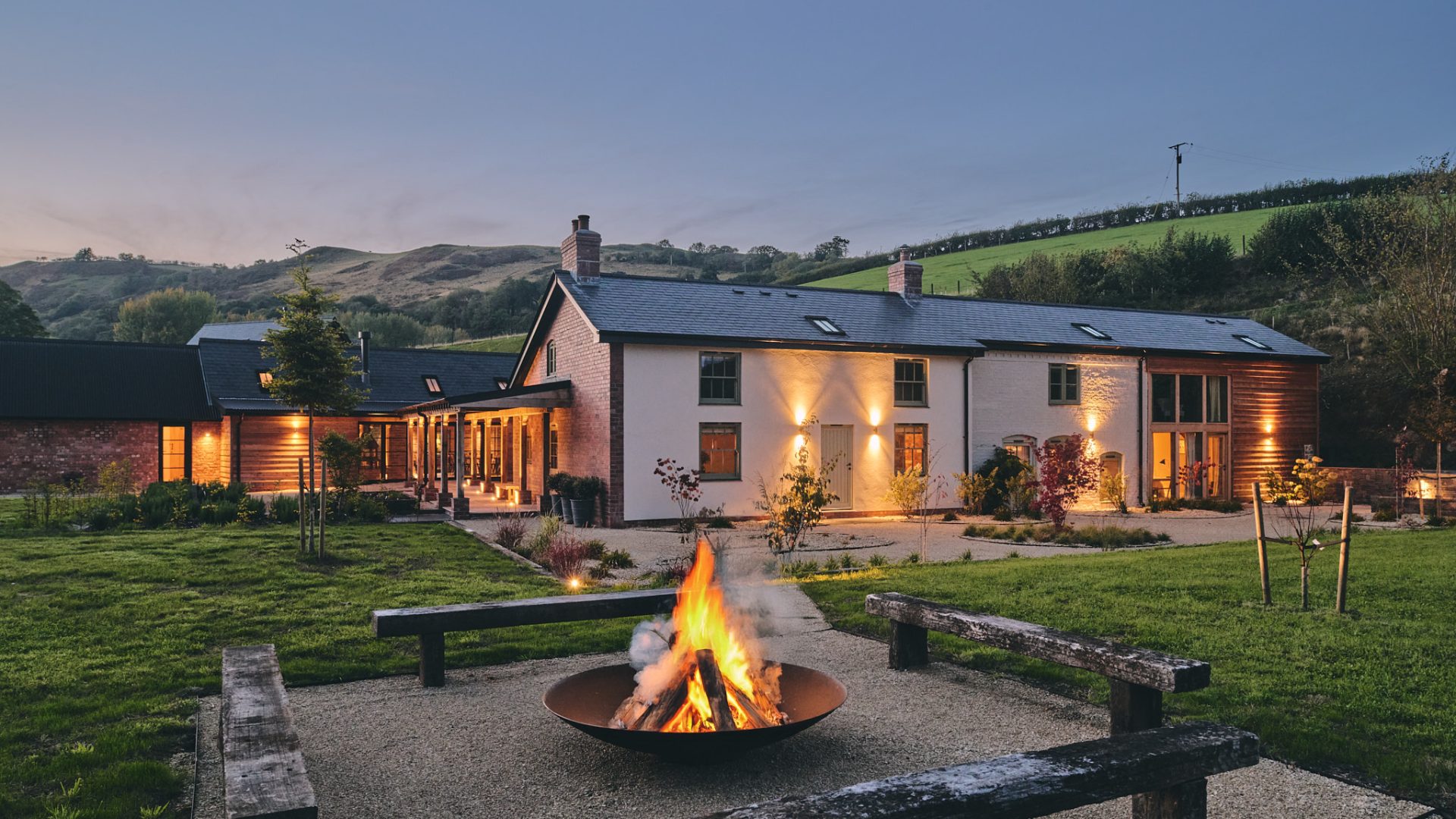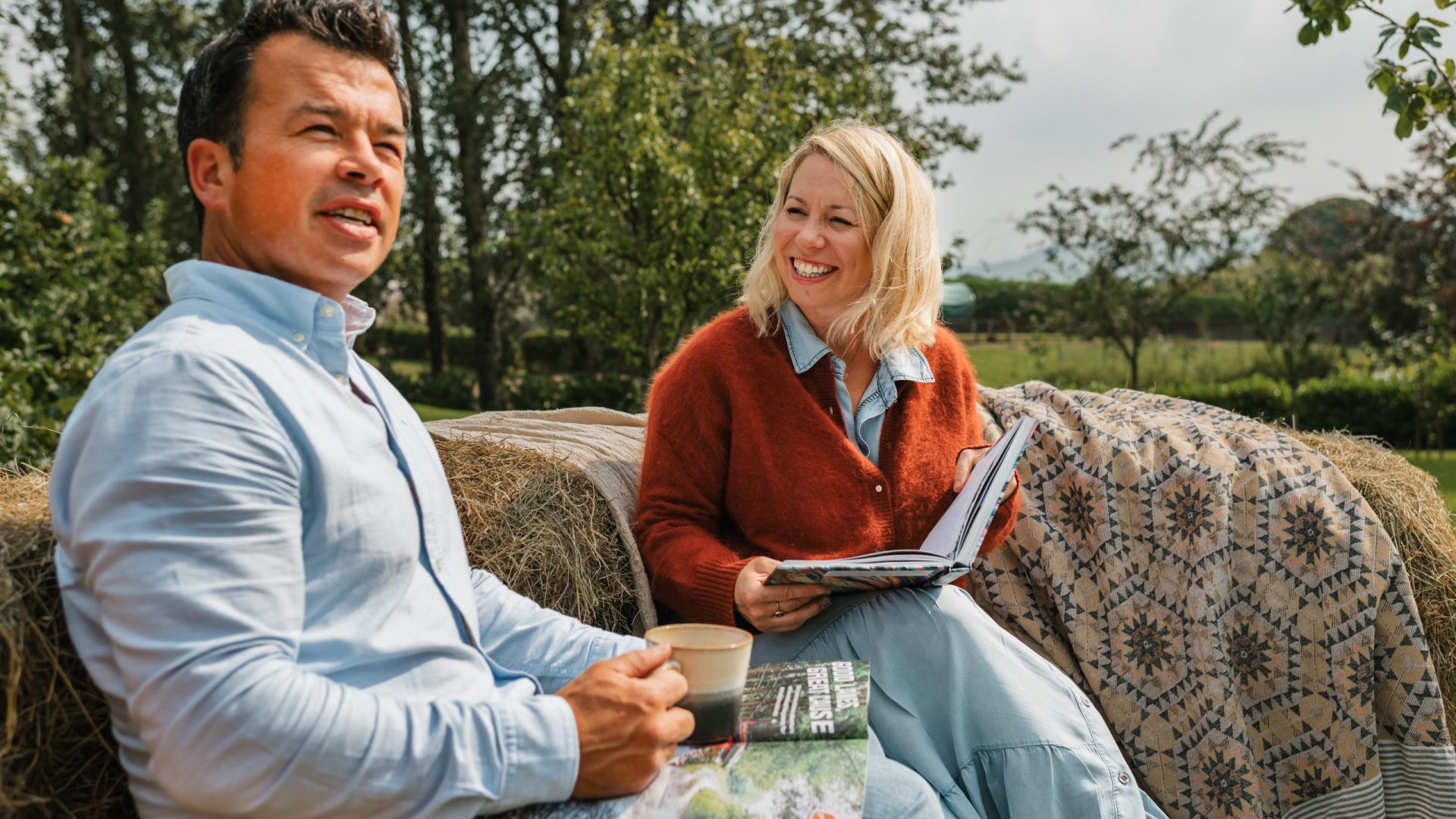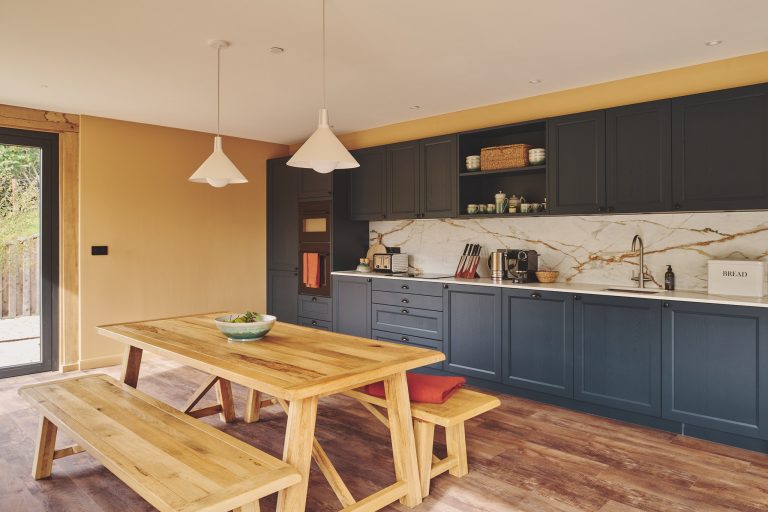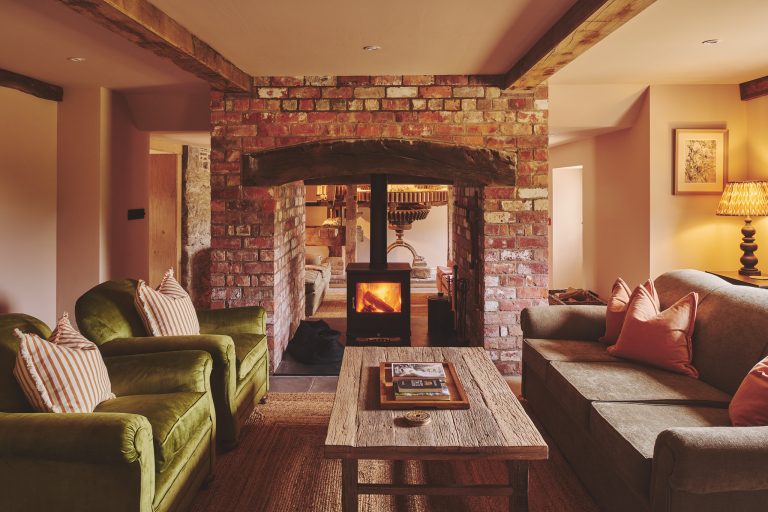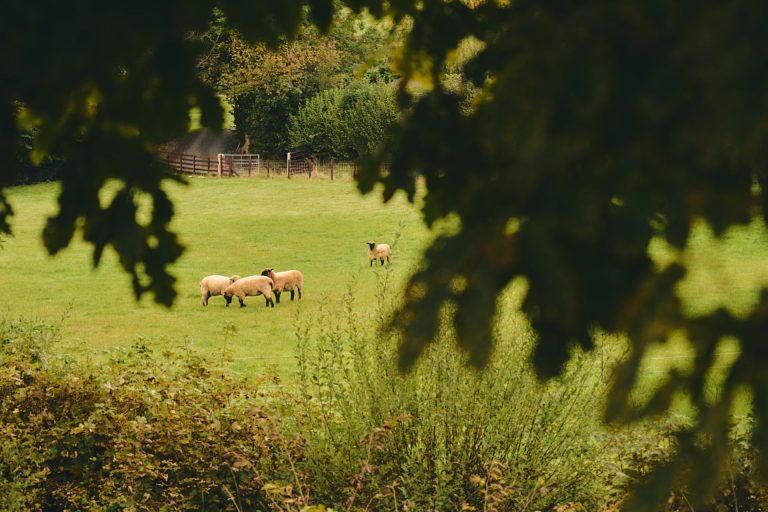Their attention to history is most evident in the Piggeries, once a cart shed for the mill’s horses and cows. “Furnishings needed to be sensitive to the origins of the building,” Robin says. “We kept the brick lining inside and used natural materials – stone floor, oak trusses and larch cladding – to keep the feel rustic, albeit now rustic luxury.” Inspiration comes from everywhere: a vintage Octane magazine print in the Piggeries, a woollen wall hanging in the Hay Barn and oak leaf prints in the Mill House – each telling a story.
When asked which space captures the soul of the project, they both agree it must be the Mill itself. “It’s hard to talk about anything other than the original working mill gearing, cogs and grinding stones which are still in situ as they were over 250 years ago,” Anna says. “It’s an incredible sight, beautifully lit. When you sink into a sofa in the Mill House and read by the fire or have a glass of wine, you’ll see the funnel shoot where the precious grain was milled.”
For them, preserving these details isn’t just about aesthetics – it’s about connection. “We’ve restored the Mill so guests can imagine all the stories of the space. We hope they have a thoughtful moment as they slow down and enjoy the property, remembering what life was like before our digital age.”
Image credit: Richard Kiely
